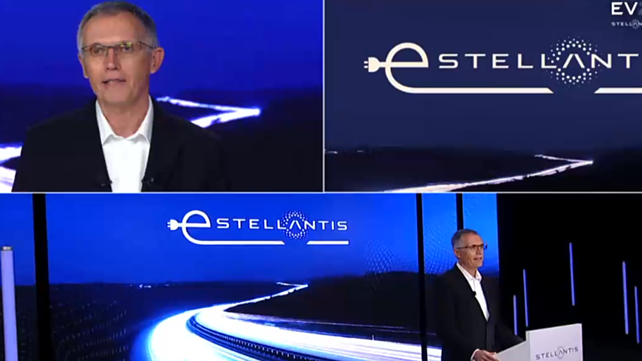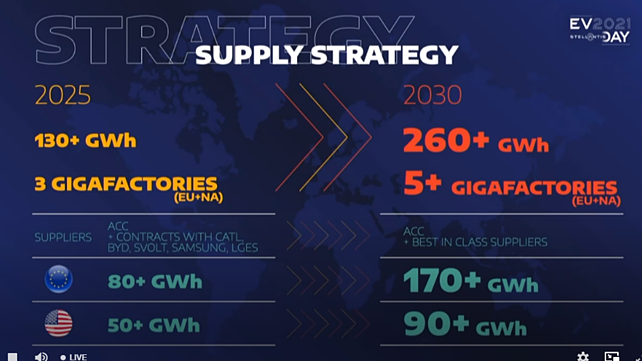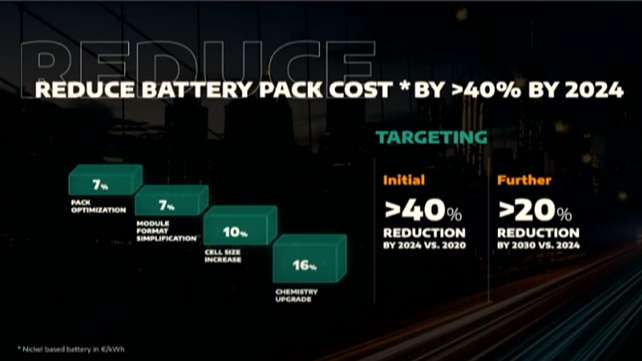
Netherlands-domiciled Stellantis is making a strong commitment to build a future that is cleaner, greener and more sustainable. In an announcement made yesterday, the company has committed to invest €30 billion through 2025 in electrification and software.
With an electrification strategy in place, it will be able to leverage in-house expertise, partnerships and joint ventures to deliver advanced technology at affordable prices. This strategy will also allow the company to target sustainable, double-digit adjusted operating Income margins in the mid-term.
“Our commitment with this €30 billion-plus investment plan is to offer iconic vehicles that have the performance, capability, style, comfort and electric range that fit seamlessly into their daily lives,” said Carlos Tavares, Chief Executive Officer, Stellantis. The strategy focuses the right amount of investment on the right technology to reach the market at the right time, ensuring that Stellantis powers the freedom of movement in the most efficient, affordable and sustainable way, Tavares said.
Stellantis is also eyeing increased profitability in the coming years, supported by the execution of the synergy opportunities arising from the formation of Stellantis. In the issued statement, the company has forecast annual cash synergies of more than €5 billion at steady state, the roadmap of battery cost reductions, continued optimisation of distribution & production costs, and realisation of new revenue streams, in particular from connected services and future software business models.
By the mid-term (~2026), the company is targeting to achieve sustainable, double-digit adjusted operating income margins.
Battery sourcing strategy
The Stellantis electrification roadmap encompasses the entire value chain. The company’s EV battery sourcing strategy is to secure more than 130 gigawatt-hours (GWh) of capacity by 2025 and more than 260 GWh by 2030. The EV battery and component needs will be met with a total of five “gigafactories” in Europe and North America, completed with additional supply contracts and partnerships to support total demand.

Stellantis has signed MOUs with two lithium geothermal brine process partners in North America and Europe to ensure a sustainable supply of lithium, identified as the most critical battery raw material with regard to availability, as well as have the ability to integrate lithium into the supply chain, once available.
In addition to sourcing strategies, the company is aiming to drive battery costs lower through its technical expertise and manufacturing synergies. Between 2020 and 2024, the target is to bring down EV battery pack costs by over 40%, and by an additional 20% by 2030.

The company intends to maximize the full value of the battery life cycle through repair, remanufacturing, second-life use and recycling, as well as ensure a sustainable system that prioritises customer needs and environmental concerns, said the company.
Four new BEV platforms
Stellantis will bring four new BEV-centric platforms under its 14 different brands. According to the company, the platforms are designed with a high level of flexibility (length and width) and component sharing, delivering economies of scale as each platform can support the production of up to two million units per year.
The four platforms include – the STLA Small, with a range up to 500 km; the STLA Medium, with a range up to 700 km; the STLA Large, with a range up to 800 km and the STLA Frame, with a range up to 800 km.
Propulsion includes a family of three electric drive modules (EDM) that combine the motor, gearbox and inverter. These EDMs are compact, flexible and can be easily scaled and configured for front-drive, rear-drive, all-wheel drive and 4xe.
The combination of the platforms, EDMs and high energy-density battery packs will deliver vehicles with best-in-class performance in efficiency, range and recharging, claimed the company.
The battery packs will be tailored for a variety of vehicles – from smaller city cars to energy-dense packs for performance vehicles and trucks. By 2024, the company plans to use two battery chemistries to support various customer needs – a high energy-density option and a nickel cobalt-free alternative. By 2026, the first competitive solid-state battery technology is targeted to be introduced.
In addition, Stellantis is currently completing several key technology joint ventures for e-powertrain & e-transmission operations, battery cell chemistry & production, digital cockpit and personalised connected services.
“Our electrification journey is quite possibly the most important brick to lay as we start to reveal the future of Stellantis just six months after its birth, and now the entire company is in full execution mode to exceed every customer’s expectations and accelerate our role in redefining the way the world moves,” said Tavares.
Tavares said Stellantis has the scale, the skills, the spirit and the sustainability to achieve double-digit adjusted operating income margins, lead the industry with benchmark efficiencies and deliver electrified vehicles that ignite passion.
Charging services
Stellantis expects to meet the challenges of driving range and rapid recharges with BEVs that will deliver ranges between 500-800 km, and with fast charging capability of 32 km per minute.
The company said it will offer a full suite of solutions for private, business and fleet customers that help simplify the ownership journey. Efforts will include providing day-to-day smart charging offers using green energy sources, tapping into existing partnerships to expand charging options and accelerating smart grid use.
The company intends to meet the demands of its varied customers by supporting the development of fast charging networks across Europe, enabled by a memorandum of understanding (MOU) signed between Free2Move eSolutions and Engie EPS. The intention is to mimic Free2Move eSolutions’ business model for the North American market.